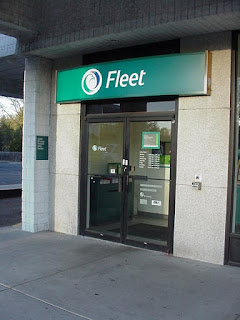 |
| US Small Business Administration. Charlotte NC |
The Paycheck Protection Program Act (PPP) was signed into law on March 27, 2020, as part of the Coronavirus Aid, Relief, and Economic Security Act (CARES Act).
The stated intention of lawmakers was to provide emergency support for small businesses across the country using the US Small Business Administration's existing loan guarantee program/s.
Unfortunately, the big bank's including Bank of America, JP Morgan Chase, and Wells Fargo, took it upon themselves to gain the system on behalf of their most preferred customers. Reportedly, this was achieved through the use of technology, and an army of bank employees carefully sheppard each PPP application through the SBA's constantly updating submission procedures.
Not surprisingly, these 'preferred' customers received approval and funding of their government backed loans/grants at 'warp speed.'
Within a matter of days, the entire first $349 billion facility was out on the street. Or, to be more precise, in the PPP recipients bank accounts.
Of course, the banks reportedly earned fees of between 1% to 5% in return for arranging these 'no risk' government-guaranteed loans to their customers.
Within days of the PPP funds being depleted. Congress and the White House scrambled to put together the follow-up supplementary Paycheck Protection Program Increase Act (PPP #II), which was enacted on April 24, 2020.
Reportedly, Congress approved PPP #II (which provided an additional $321 billion of financial assistance) on the understanding that the funds would specifically be made available to smaller lending institutions, credit unions, and local community banks.
Today, there are reportedly 4.2 million U.S. Small Business Administration guaranteed loans across America. As of May 10, only $120 billion of remaining funding is available to new applicants.
Currently, oversight of the PPP and PPP #II billions falls on several bodies including a new inspector general to oversee Treasury Department funds. A new congressional oversight committee to keep an eye on all the government agencies involved. And a committee of inspectors generals to presumably watch over all of those mentioned above. Quite a party!
What is also abundantly clear today as we rapidly approach the end of May, is that confusion reigns supreme with both lenders and borrowers relating to the SBA's highly fluid rules governing the PPP and PPP #II loans/grants.
High priced 'white shoe' law firms are already churning out bulletins, and press releases advising clients on how NOT to get embroiled in a nasty legal spat with the SBA as a result of government identified misuse or fraudulently obtained PPP loans.
Reportedly, many small business owners are now worried that they may not have met the mandated government requirements, relating to the utilization of their PPP funds. This includes using 75% for payroll and 25% for rent and utilities by a pre-determined time. Worse, due to the SBA's ever-changing rules and regulations relating to the PPP program, they now wonder if they qualify for the much-touted loan forgiveness, as promised at the outset of the Coronavirus pandemic by members of Congress.

On May 15, the US Treasury Department released a new
application form for businesses with PPP
loans seeking debt forgiveness. Meeting the government's requirements could be difficult for many business owners, but the 11-page application does offer some helpful guidance.
The Treasury Department bases loan forgiveness on whether a business hires back its former employees, or offers equivalent employment.
Then there is the 'F' word. Interestingly, no one has been talking about fraudulent PPP loan/grant applications. But as sure as the Sun will rise in the east tomorrow, they are out there. Lots of them!
History tells us that fraud involving SBA guaranteed loans typically involves loans made to cover existing bad debt held by small community banks. Chances are nothing has changed, and one-way-or-another unqualified PPP applicants and their lenders are again manipulating the system for their financial gain.
For those small businesses which did not have the 'right bank connections' (or did not meet the qualifying criteria) and therefore, were unable to secure PPP funding, things do not look good for the future.
Special Loans, Managed Asset Division," (MAD), and Realization Services, are just three of the names given to bank departments charged with the responsibility of getting as much of the bank's money back as possible from financially distressed borrowers.
While lenders claim that they are always willing to work with borrowers facing conflict and adversity, again, history tells us that in reality, it is simply not true.
In 2020/1/2, it is highly likely, that banks both big and small (and in-between) will elect to charge-off loans and take their chances seeking reimbursement from the sale of assets covered by both UCC-1's and personal guarantees provided by guarantors.
No matter how many times a distressed business owner reaches out to their lender, elected officials or other stakeholders pleading their case for further time to turnaround their ailing business, sometimes the reality is that local bankruptcy court is the best venue and only place to seek a second chance.
Message to ALL small business owners in MAY 2020: Prepare for the worst and hope for the best.
Good Luck!












